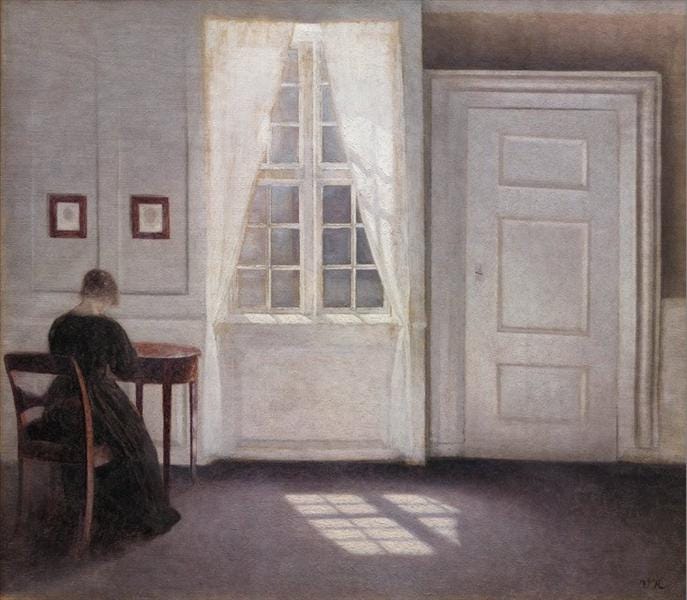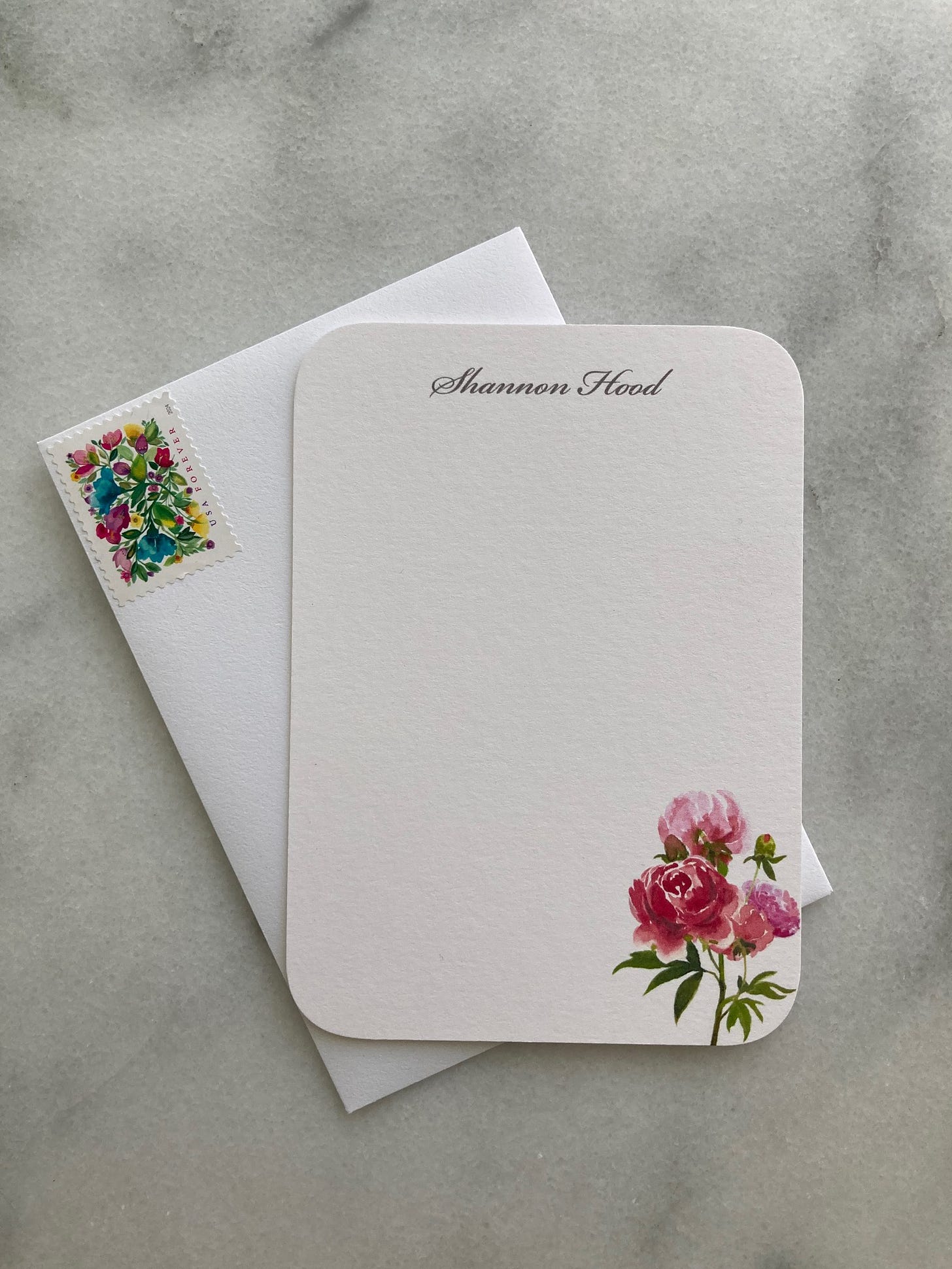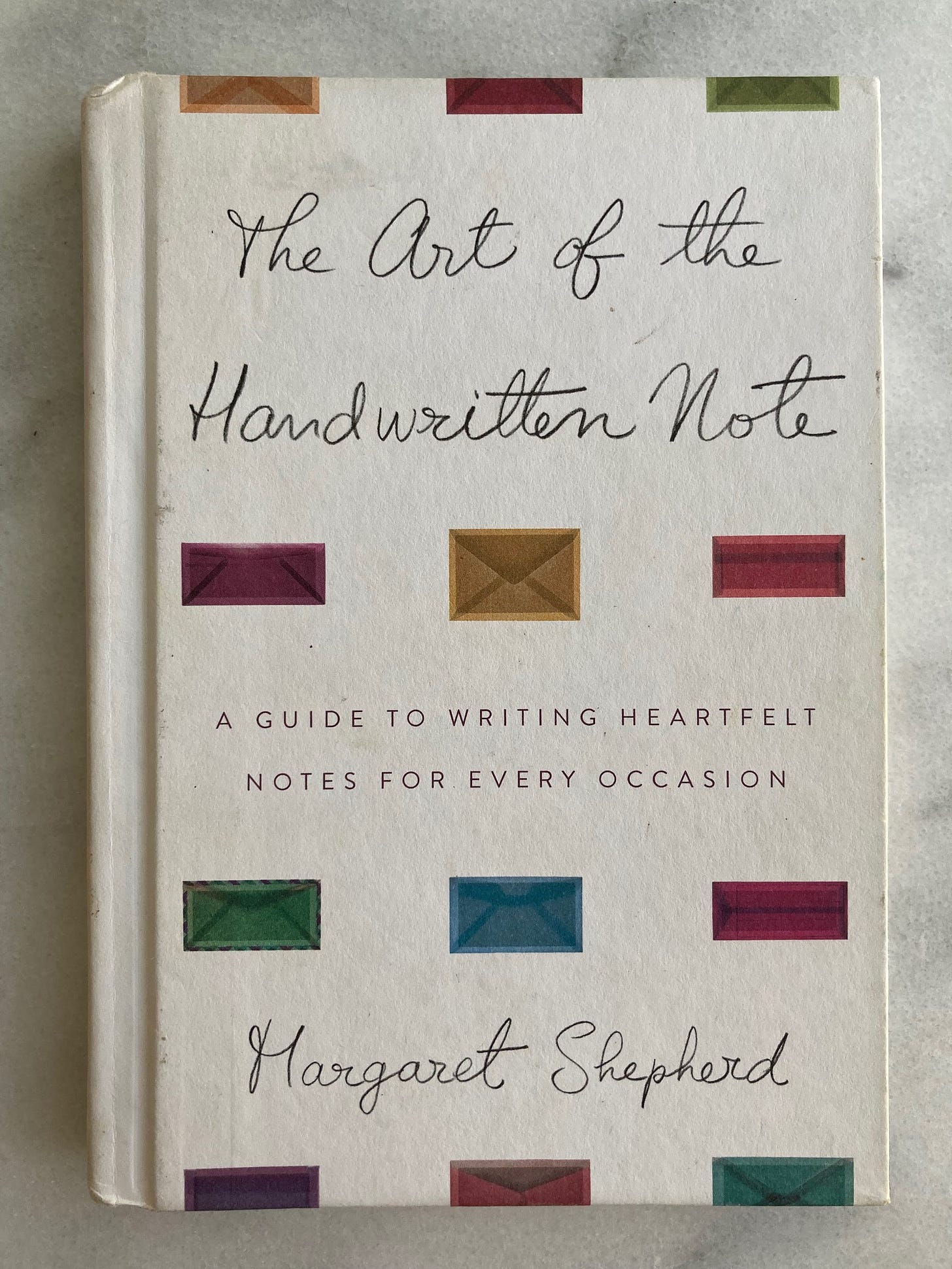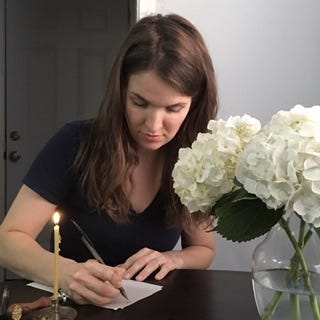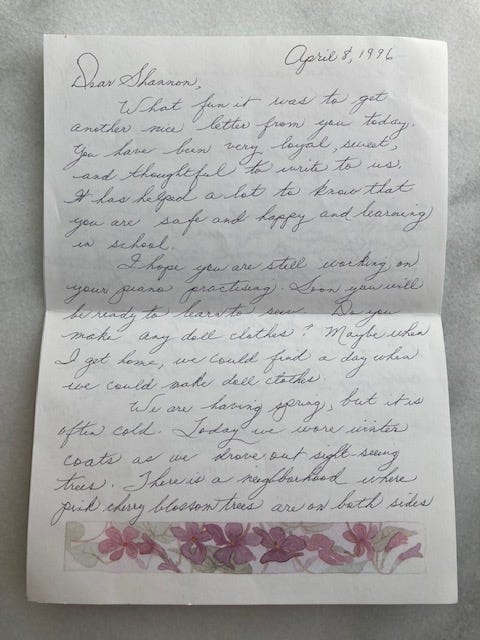How to begin a letter-writing habit
Because letters embody all the best aspects of communication, and are worth holding on to
By
fromRuth Gaskovski & Peco who write atSchool of the Unconformedrecently asked readers to share their stories ofordinary daily acts that keep the invasion of digital technology at bay.In 2019, Iwrote one handwritten letter every single day, amounting to well over 400 letters. While I don’t write quite that many letters anymore, I have continued the regular habit of letter writing, and I believe in it just as much as I did six years ago—if not more so.
We are drowning in electronic communication--much of it is meaningless, and very little of it is of lasting value. None of it is tangible. I write letters because they embody all of the best aspects of communication. Letters are meaningful, intimate, private, tangible, and worth holding on to.
If you have felt the tug to set your phone aside a little more and connect with those you love in a tangible way, may I offer a few tips as you begin writing more handwritten letters? Because in the words of Margaret Shepherd, ink on paper is still the classiest way to express the thoughts that really matter, on the occasions that really count.
Decide on your why: Why do you want to begin writing letters? Write these reasons down in a letter to yourself, and revisit it anytime you feel discouraged and want to give up. Don’t skip this step! The temptation to give up letter writing is strong, especially during a spell when you aren’t receiving many replies in return. Keep your why close at hand and re-read it frequently.
Make a list of recipients: Who do you want to write letters to? Make a list of people who you would love to correspond with, and gather their addresses if you don’t already have them. Having a list of names/addresses takes the work out of thinking of who to write to. Once you have listed your closest friends and family, think of all the people in your life who have helped you in some way. The year I wrote a letter a day, I loved writing letters of gratitude to everyone I could think of who had loved me, served me, or had helped me in some way during my life. The list was far longer than I had imagined it would be.
Gather supplies: This is the fun part! You can, of course, use paper and envelopes that you already have. But if you need an extra bit of motivation to start writing, and you’d like something beautiful, there are endless options. Botanica Paper Co. has darling stationery sets, Farmette Co. makes stunning letterpress stationery, classic stationer Crane makes ecru half sheets and envelopes that are perfect for a heartfelt letter. Felix Dolittle’s return-address labels make your envelope into a little work of art. Don’t forget a sheet or two of stamps to get you started.
Decide on a place and a time: Habits, in order to be successful, need to be concrete and specific. Where will you write your letters? At a desk? At the kitchen table? Gather your supplies in a basket, a tray, or a box with addresses, paper, envelopes, pens, and stamps all together to make your letter writing routine smooth and easy. What time of day will you write? Right after breakfast while your children are at school or busy with their morning chores & schoolwork? After lunch when you feel a bit sluggish but aren’t quite ready to take a nap yet? Make a ritual out of it: light a candle, make a cup of tea (mint & nettle is my favorite), turn on soothing music. Pleasant habits are always easier to acquire.
Don’t start alone: Find a friend and commit together to write letters to each other. Even one regular letter-writing kindred spirit is enough to keep you motivated to continue if you aren’t getting a lot of letters back.
If you’re looking for more inspiration for your letter-writing journey, these books are wonderful:
The Art of the Handwritten Note by Margaret Shepherd
My favorite little guide to writing letters, this book is full of inspiration as well as practical tips for writing thank you notes, condolence letters, as well as how to help children learn to write thank you letters (an absolute must).
84, Charing Cross Road by Helene Hanff
A charming book chronicling the correspondence between a freelance writer in NYC and a used book seller in London. I highly recommend the audio version of this as each character is read by a different person which adds to the delight of the story. If you love reading books and writing letters, this book is for you!
I Love You, Ronnie: The Letters of Ronald Regan to Nancy Regan
One of the best books on letter-writing to a spouse. Ronald Regan wrote letters and notes constantly to his beloved wife, and she includes a few of them in this book. One of my favorites was this simple note:
My Darling,
This is really just an “in-between day.” It is a day on which I love you three hundred and sixty five days more than I did a year ago and three hundred and sixty five days less than I will a year from now.
But I wonder how I lived at all for the three hundred and sixty fives before I met you.
All my love,
Your Husband
Isn’t that so romantic? I sometimes overthink the letters I write—I think I need to have something special or specific to say— but no. Just a short note that says “I love you” is always perfect and enough. Here’s to writing all the loving thoughts we have down on paper.
More books on letter writing:
—The Art of the Personal Letter by Margaret Shepherd
—Heartspoken: How to Write Notes that Connect, Comfort, Encourage and Inspire by
—365 Thank Yous by John Kralik
—To the Letter: A Celebration of the Lost Art of Letter Writing by Simon Garfield
—Kind Regards: The Lost Art of Letter-Writing by Liz Williams
—Illustrated Letters of Jane Austen by Penelope Hughes-Hallett
My beloved grandmother, aged 97, passed away this morning, and I would be remiss in writing an entire essay on letter-writing without mentioning her. She was a prodigious writer of both letters and cards, and sent birthday cards to all of her posterity (which now numbers well over 100) throughout her life. She is one of the reasons I write letters today, and my gratitude for her loving example is deep. I hope I can continue in her well-trod path and keep writing letters for the rest of my life.
Corresponding on paper lets you elevate a simple pleasure into an art form. And art has always survived technology.
-Margaret Shepherd, The Art of the Handwritten Note
Keep seeking the virtuous and the lovely,
Shannon
To leave a comment, visit
’s original post here:



